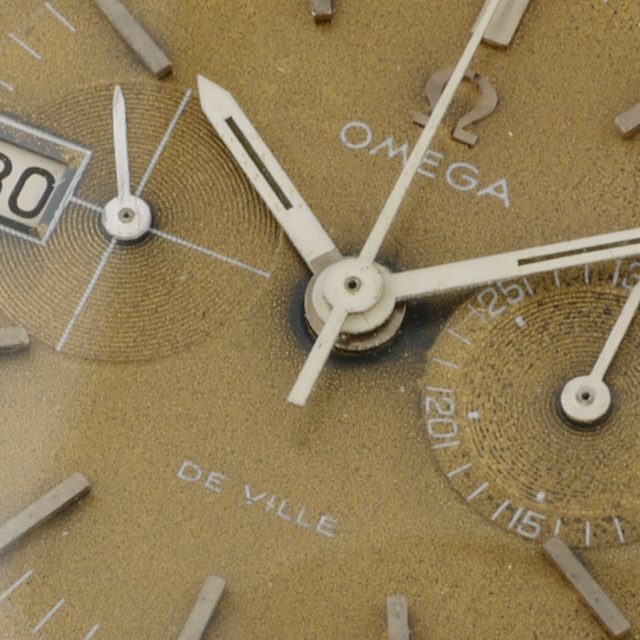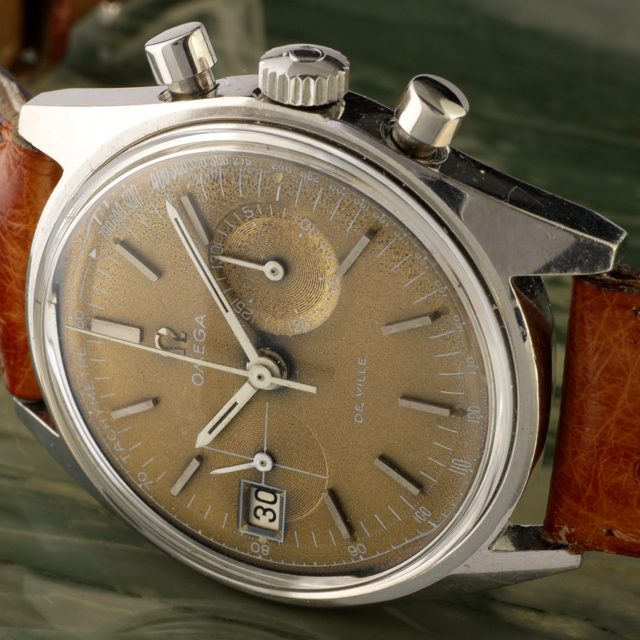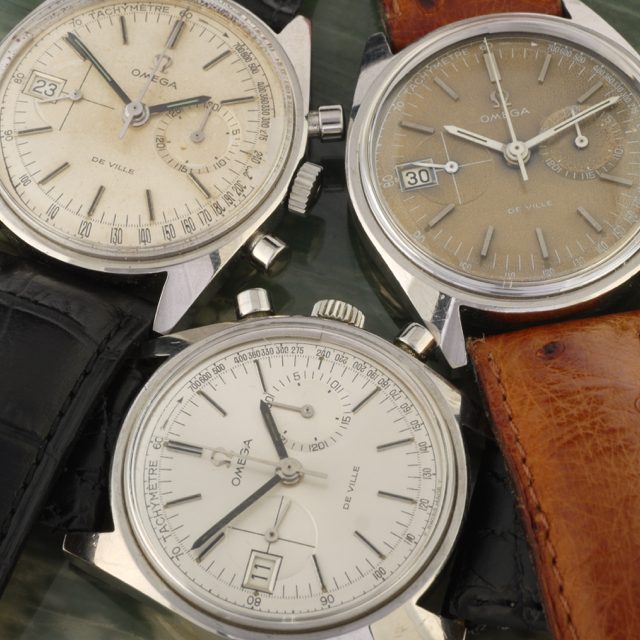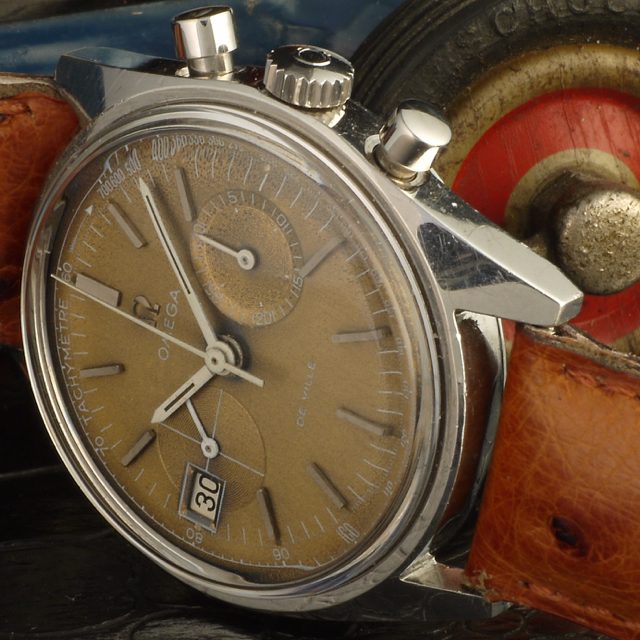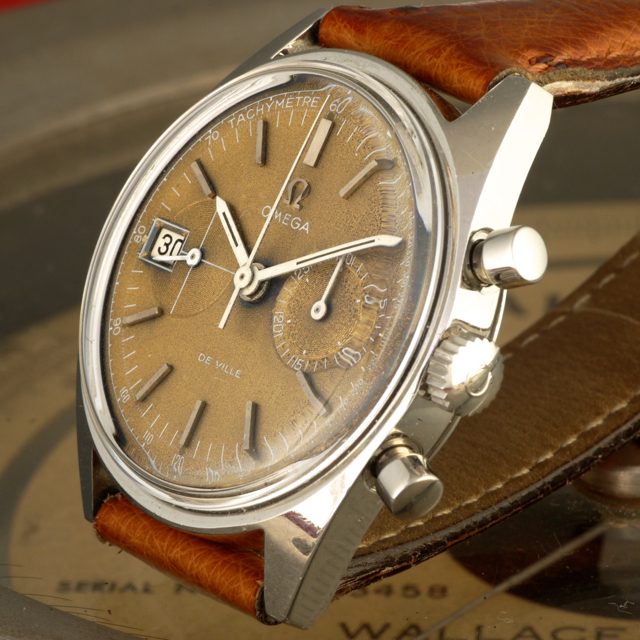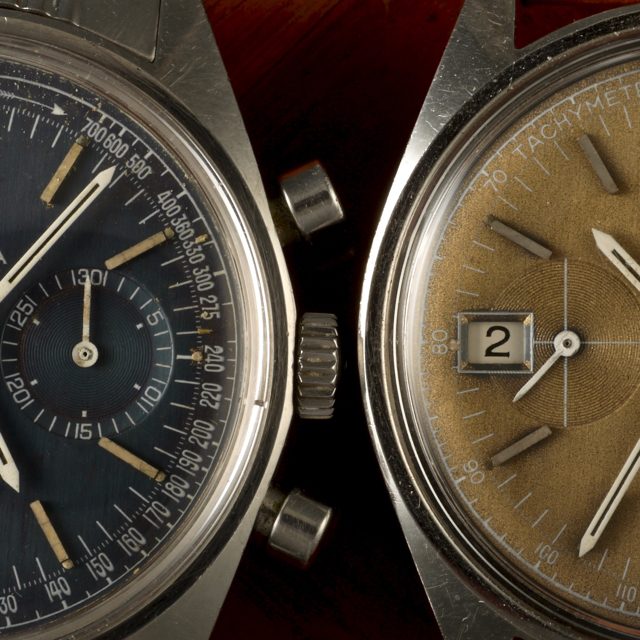Omega de Ville
IBM introduces the floppy disk1970 tropical dial Omega de Ville 146.017 cal.930, This dial is so unique!!!
Tropical dial Omega de Ville 146.017.
Note that the original blue center of the dial turned bronze with aging. Long sought after by collectors. A flaw in the manufacturing process resulted in the occasional fading of the dial to a shade of brown, described as tropical dial or chocolate. Read more about tropical dials in my article here.
The Omega de Ville 146.017, equipped with the manual winding movement cal. 930, the same used in the Omega Bullhead and based on 861 / Lemania 1873 used on the Moonwatch.
The calibre 930, relatively short lived and not originally popular. According to estimation they produced some 10.000 pieces of this movement and used only in two models.
The movement worked as an evolution of Omega’s 27 CHRO range and formed part of the wider 861 family of watches, developed from the 320 and 321 series.
The tropical dial Omega de Ville 146.017 marketed as a dress chronograph and hard to find watch. It’s the only Omega I can remember with the date window at 9 o’clock. I have four and the tropical dial is very unique, but the blue is also rare.
Check other three different dials; 1-silver light patina 2-silver like new 3-blue dial 4-tropical dial.
They launched Omega de Ville watches in 1960 and marketed as water resistant timepieces. Their varied and adaptable designs became very popular and by 1967.It had become the largest range within the Omega brand.
Louis Brandt founded Omega in 1848 at the age of 23. The brand’s reputation grew fast and in 1895 the watches achieved a precision of 30 seconds a day.By the turn of the 19th century, one of Switzerland’s largest watch companies with 240,000 watches.Omega produced annually and employing 800 people.
Omega made its debut in sports during the Gordon Bennett international ballooning Cup in 1917; since then Omega has gone on to be the official timekeeper at 21 Olympic Games.
In 1936 Omega set the remarkable World precision record of 97.8 points at the Kew-Teddington observatory in England.
In 1957, with Motorsport in mind, Omega launched the Speedmaster, which in 1965 NASA chose as its official chronometer in Space. Four years later the Moon watch was the first watch to be worn on the Moon. When on 21st July 1969 Neil Armstrong made his giant leap for mankind. Currently Omega belongs to the Swatch Group.

